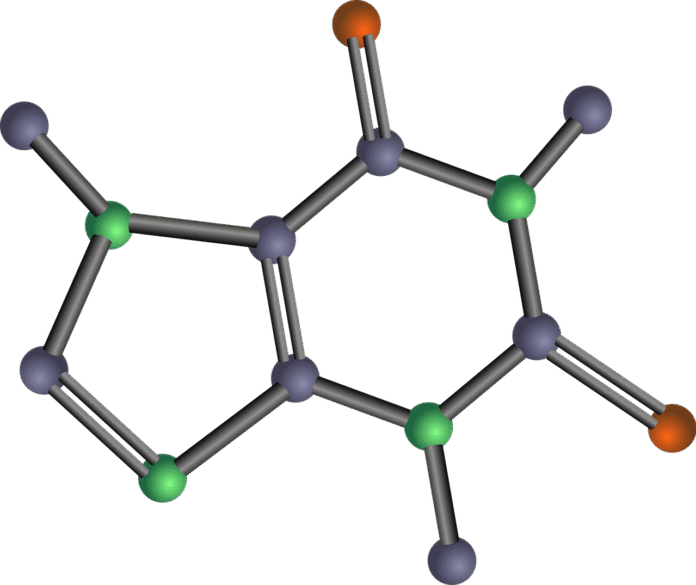Chemistry often introduces us to intimidating formulas and symbols that can feel overwhelming at first glance. One such formula is HCOOCH CH2 H2O, a compound that combines elements of organic and inorganic chemistry. While the formula may look confusing, breaking it down step by step helps us understand its structure, properties, and importance in the world of chemistry.
This guide is written for beginners, with the goal of simplifying the subject. By the end, you will have a clear idea of what this formula represents, how it behaves, and why it matters in both scientific research and practical applications.
Breaking Down the Formula
To understand any chemical compound, the first step is to look at its formula. The formula given here is HCOOCH CH2 H2O. At first sight, it may look unusual because of the way the elements are written together. Let us carefully analyze it:
- HCOO– represents the formate group, which is derived from formic acid (HCOOH). This group often appears in esters, salts, and other organic compounds.
- CH2 is a methylene group, commonly found in many organic molecules. It often acts as a connector between different parts of a compound.
- H2O represents water, which can either be part of the molecule itself (as water of hydration) or may indicate that the compound exists in hydrated form.
When these groups are joined, they create a molecule that appears to be a derivative of an ester of formic acid combined with water. This combination makes it an interesting compound to study because esters are known for their unique chemical properties, while hydration adds another layer of behavior.
What Are Esters and Why Are They Important?
To better understand this compound, we need to explore esters. Esters are organic molecules formed when an acid (usually a carboxylic acid) reacts with an alcohol. For example:
Carboxylic Acid + Alcohol → Ester + Water\text{Carboxylic Acid + Alcohol → Ester + Water}Carboxylic Acid + Alcohol → Ester + Water
Formic acid (HCOOH) can react with alcohols to form formate esters. The group HCOO– in our compound is an ester component, suggesting that the molecule may be an ester or ester-related compound.
Esters are important because:
- They are responsible for many natural fragrances (like the smell of fruits).
- They are used in flavorings and perfumes.
- They play a role in biological systems, where ester bonds hold together fats and oils.
Thus, if HCOOCH CH2 H2O is indeed an ester-related compound, it may have both industrial and biological significance.
The Role of Water in the Compound
The presence of H2O in the formula can mean different things:
- Hydrated Form – The compound may naturally bind to water molecules in its crystal structure.
- Reaction Product – Water could be a byproduct of the reaction that forms the ester.
- Solvation – In solution, water molecules may strongly interact with the compound, affecting its properties.
For beginners, it is important to note that water often changes how molecules behave. A “dry” compound may have different melting points, solubility, and reactivity than the same compound in hydrated form.
Physical and Chemical Properties
Although specific experimental data on HCOOCH CH2 H2O is limited, we can predict its properties based on related compounds:
- Physical Properties
- Likely to be a liquid or low-melting solid at room temperature.
- May have a mild odor, since many formate esters have fruity or sharp smells.
- Expected to be soluble in water, especially in its hydrated form.
- Likely to be a liquid or low-melting solid at room temperature.
- Chemical Properties
- Susceptible to hydrolysis – meaning water can break it down back into formic acid and an alcohol.
- May undergo combustion, like other organic molecules, producing carbon dioxide and water.
- Reacts with strong bases or acids, altering its structure and properties.
- Susceptible to hydrolysis – meaning water can break it down back into formic acid and an alcohol.
These characteristics make such compounds useful in laboratories and industrial settings.
How It Is Formed
The compound can be thought of as forming through an esterification reaction:
Formic Acid (HCOOH) + Alcohol → HCOO–CH2 + H2O\text{Formic Acid (HCOOH) + Alcohol → HCOO–CH2 + H2O}Formic Acid (HCOOH) + Alcohol → HCOO–CH2 + H2O
Here, the HCOO–CH2 portion represents the ester linkage, and water is released in the process. Depending on how the reaction proceeds, the water may remain associated with the compound or may separate.
This is why formulas sometimes include H2O explicitly—to show that the compound is hydrated.
Real-World Applications
Why should beginners care about such a compound? Even though the formula looks abstract, molecules like HCOOCH CH2 H2O have practical importance:
- Solvents – Esters are often used as solvents in industries because they dissolve both polar and non-polar substances.
- Flavorings and Fragrances – Many formate esters are used in food and cosmetic products to add scents or flavors.
- Fuel Additives – Some esters improve combustion efficiency and are added to fuels.
- Laboratory Research – Understanding the behavior of such compounds helps scientists design better chemical processes.
So, a beginner studying this compound is not just learning theory—it connects directly to industries that affect daily life.
Safety and Handling
Like many esters, compounds related to HCOOCH CH2 H2O must be handled with care. Beginners in chemistry should always remember safety first:
- Flammability – Esters can be flammable, so they should be kept away from open flames.
- Inhalation Risks – Some may have strong odors or vapors that irritate the lungs. Proper ventilation is important.
- Skin Contact – Direct contact can cause mild irritation, so gloves should be worn.
Understanding safety is as important as understanding the chemistry itself.
A Beginner’s Path to Deeper Chemistry
Learning about HCOOCH CH2 H2O is not just about memorizing a formula. It teaches key lessons about how chemists interpret molecular structures:
- Always break down the formula into recognizable groups (like HCOO, CH2, H2O).
- Understand the class of compounds it belongs to (in this case, esters).
- Connect the compound to real-world uses to appreciate why it matters.
This structured approach will help any beginner build confidence when encountering new and complex formulas.
Conclusion: Making Sense of a Complex Formula
At first, HCOOCH CH2 H2O seems like a random string of letters. But by carefully examining it, we realize it represents an ester-related compound that includes both organic and water components. Esters are significant in chemistry because they appear in everything from fruit flavors to fuels. The water part adds another dimension, influencing how the compound behaves in real life.
For beginners, this compound is a perfect example of how chemistry can look complicated but actually follows simple rules. By breaking it down into smaller parts, understanding its properties, and connecting it to everyday uses, we transform mystery into knowledge.
In the end, HCOOCH CH2 H2O is not just a chemical formula—it is a learning journey into the world of esters, hydration, and the beauty of chemistry itself.
thedailydialogue.com





